Eclipse myths and misfortunes: Local experts explain that eclipses have a rich, reality-defying history
| Published: 04-07-2024 6:01 PM |
Manju Sharma remembers sitting on the lawn of her childhood home in Himachal Pradesh — the northern-most state of India — years ago, gazing at a solar eclipse reflected in a flat water vessel.
Sharma’s school closed early that day to prevent children from walking home during the eclipse. Restaurants and Hindu temples stayed shuttered, giving people little reason to leave their homes and discouraging outside activities.
“Sometimes, [people] say do not knit or sew during the solar eclipse. The overall message is do not be too active during that time,” said Sharma, who is now an advisor for Students in Hinduism Reaching Inward at the University of Massachusetts and Mount Holyoke College.
Sharma recalled that she began to fast a few hours before the eclipse, and would continue her fast until after bathing. She then feed any cooked grain to the cows, poured any standing water into her favorite plants and organized the uncooked grain into nine grain heaps with her grandparents, one for each of the planets.
“The food was given out and we started fresh. That was the best part: we started everything fresh,” she said.
Sharma’s experience doesn’t begin to tap into the rich history and traditions of her region, let alone all of India. As Sharma puts it, a person can travel 50 kilometers from her childhood home and find completely different ideas, traditions and dialects.
Yet as much of the world prepares for Monday’s total solar eclipse — the eclipse will make landfall along Mexico’s Pacific coast and cross into Texas and 14 other U.S. states, before exiting over Canada — with excitement, there are also feelings of wariness associated with eclipses. Many of the customs Sharma practiced as a child involve cleansing and protection from possible tainting of negative energy. Outside of India, solar eclipses historically signaled calamity was on the horizon, and while many anxieties around the eclipse dwindled as understanding of the planet’s orbits grew, the eclipse still brings danger to the horizon.
Historical accounts worldwide often depicted eclipses as reality-defying events. Greek poet Archilochus wrote that “fear has come upon mankind” now that Zeus “has made night out of noonday, hiding the bright sunlight.”
Article continues after...
Yesterday's Most Read Articles
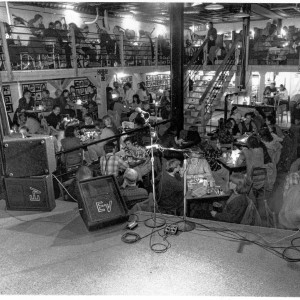 The Iron Horse rides again: The storied Northampton club will reopen at last, May 15
The Iron Horse rides again: The storied Northampton club will reopen at last, May 15
 Homeless camp in Northampton ordered to disperse
Homeless camp in Northampton ordered to disperse
 Authorities ID victim in Greenfield slaying
Authorities ID victim in Greenfield slaying
 $100,000 theft: Granby Police seek help in ID’ing 3 who used dump truck to steal cash from ATM
$100,000 theft: Granby Police seek help in ID’ing 3 who used dump truck to steal cash from ATM
 UMass football: Spring Game closes one chapter for Minutemen, 2024 season fast approaching
UMass football: Spring Game closes one chapter for Minutemen, 2024 season fast approaching
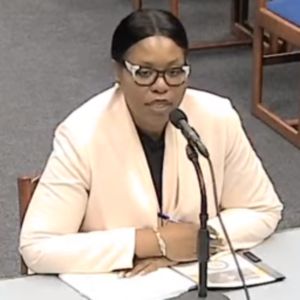 Final pick for Amherst regional superintendent, from Virgin Islands, aims to ‘lead with love’
Final pick for Amherst regional superintendent, from Virgin Islands, aims to ‘lead with love’
According to “Records of Solar Eclipses in Arabic Chronicles,” Ibn al-Jawz wrote that “birds fell whilst flying” during an eclipse in 1061. William of Malmesbury wrote about a solar eclipse in 1133 that “there was so great an earthquake, that the ground appeared absolutely to sink down.”
However, the dramatization of these accounts may stem from their retrospective nature. Both William of Malmesbury and Ibn al-Jawz wrote about the eclipses decades after they occurred. If catastrophic events happened shortly after an eclipse, these sometimes scribes fell for post hoc fallacy, according to history experts at the Five Colleges. For instance, King Henry I of England sailed to Normandy during the total solar eclipse William of Malmesbury wrote about. The king died abroad two years later, causing chaos and a civil war.
“Most of the reports that we have of these are retrospective. The chronicles that recorded them were written years, or sometimes centuries or decades after the eclipses, so the inclination was to associate the eclipse with bad signs,” says Brian Ogilvie, a history professor at UMass.
Astrological forecasts in Europe also added to the mythology of solar eclipses. The specific effects of the eclipse depends on when it happened, what time it happened, where it occurred and the zodiac house the sun and moon were in. A solar eclipse in 1582, for instance, occurred in the house of Cancer, a water sign. Astrologer Richard Harvey predicted this eclipse would cause rainstorms, flooding and destruction of fish. He also predicted robberies, murders and sedition.
“These predictions are so broad that likely something of the sort was going to happen,” Ogilvie said.
The fear and grander of eclipse stories can be traced to before Medieval Europe rediscovered astrology from the Greeks, in founding myths in cultures across the world.
The solar eclipse myth in Hinduism, for instance, is part of the Samudra Manthana, a story about the gods and anti-gods, or demons, who used mountains to churn the nectar of immorality at the bottom of the ocean. When two opposing parties fight over the nectar, one of anti-gods, Rahu, swallows some. But the gods intervened and severed Rahu’s immortal head, banishing it to the heavens. When Rahu’s head came near the sun and moon, he tried to swallow the celestial bodies, only they escaped.
“It all sounds very filmic, and early Indian texts are, which is one of the reasons you hear them recounted so much. There is kind of a grander,” says Andy Rotman, a South Asian professor at Smith College. “There are people who read these texts all kinds of ways, but that visual is telling.”
In South and East Asian, many eclipse myths involve a demonic entity attempting to swallow the sun. In ancient China, people believed eclipses were caused by a dragon attempting to eat the Sun or moon. In Vietnam, a giant frog takes the place of a dragon. In Javanese mythology, the god of darkness, Batara Kala, eats sun and villagers must appease him with dances and sacrifices.
All these stories lend themselves to the inauspiciousness that Sharma experienced with the eclipse.
“You don’t enjoy an eclipse with an outdoor barbecue or picnic. It’s the opposite of that,” Rotman said.
Unlike myths and astrological projections, eclipses themselves do not actually cause events of extreme danger. In fact, modern astrological interpretations of the eclipse turn away from the negative chaos of past astrological forecasts, and instead embrace these celestial events as a time of major change.
Misha Roy, who owns Spill the Tea Sis Apothecary in Northampton, said the eclipse on Monday can cause “really firm hard dramatic endings, really over the top beginnings and really big emotions.”
“A really interesting thing going on with the astrology recently is we had a full moon that lead to mercury retrograde, and then mercury retrograde leads into the eclipse,” she added. “All of this stuff is furnishing up story lines in your life that started in September and October of 2023, and so that’s one of the reasons these endings are hitting harder than usual.”
Rather than catastrophic events following the eclipse, the danger of this event occurs during the actual eclipse. People who stare directly at the eclipse, even in short intervals, have reported black or blurry spots in their vision. An article in the New York Times opens by recounting a woman with a crescent-shaped spot in her vision, and the same shape burned into her retina from looking at the eclipse.
“Sun is very, very bright. You cannot look directly at it with their eyes or it will burn our retinas,” Mount Holyoke ASTRO Club member Katie Lester said.
In 2009, thousand of people gathered at the Knock Shrine in Ireland to search for visions of the Virgin Mary in the Sun’s rays. Four women who attended the event sought medical attention, complaining of blind spots. Investigators from Galway University Hospital followed up with the women years later and found all four women still had blind spots.
“You should never look at the sun for a long period of time. The problem with the eclipses is people think it’s safe [to look],” said Thomas Burbine, director of the Williston Observatory at Mount Holyoke College. “Even a little part of the sun can cause problems with your eyes.”
Burbine and the ASTRO club at Mount Holyoke handed out certified eclipse glasses on Friday, which only let in a 0.0032% of the sun’s rays. Even gazing at a sliver of the sun for long periods can cause permanent damage to the retina. Although Monday’s total eclipse will cover 94% of the sun in Northampton, even the 6% of exposed sun can harm human eyes.
For those interested in watching the solar eclipse, certified eclipse glasses are the safest way to experience this event, but people can also watch the phenomenon through a colander on a piece of paper. The Williston Observatory will reflect the eclipse on a white screen for people to witness. Astronomers at UMass Amherst will talk about the eclipse and hand out glasses at the UMass Amherst Sunwheel and Metawampe Lawn on Monday at 2:15 p.m.
Emilee Klein can be reached at eklein@gazettenet.com.


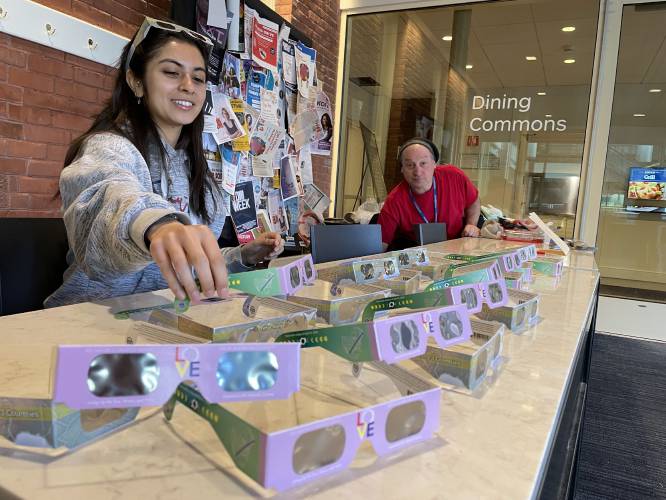
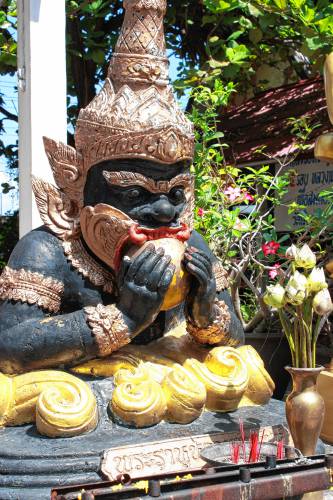
 Authorities ID victim in Greenfield slaying
Authorities ID victim in Greenfield slaying 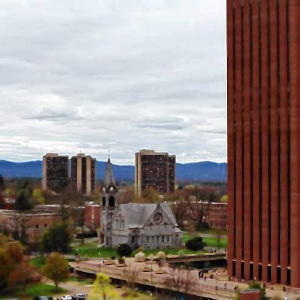 Federal probe targets UMass response to anti-Arab incidents
Federal probe targets UMass response to anti-Arab incidents Locking up carbon for good: Easthampton inventor’s CO2 removal system turns biomass into biochar
Locking up carbon for good: Easthampton inventor’s CO2 removal system turns biomass into biochar William Strickland, a longtime civil rights activist, scholar and friend of Malcolm X, has died
William Strickland, a longtime civil rights activist, scholar and friend of Malcolm X, has died
